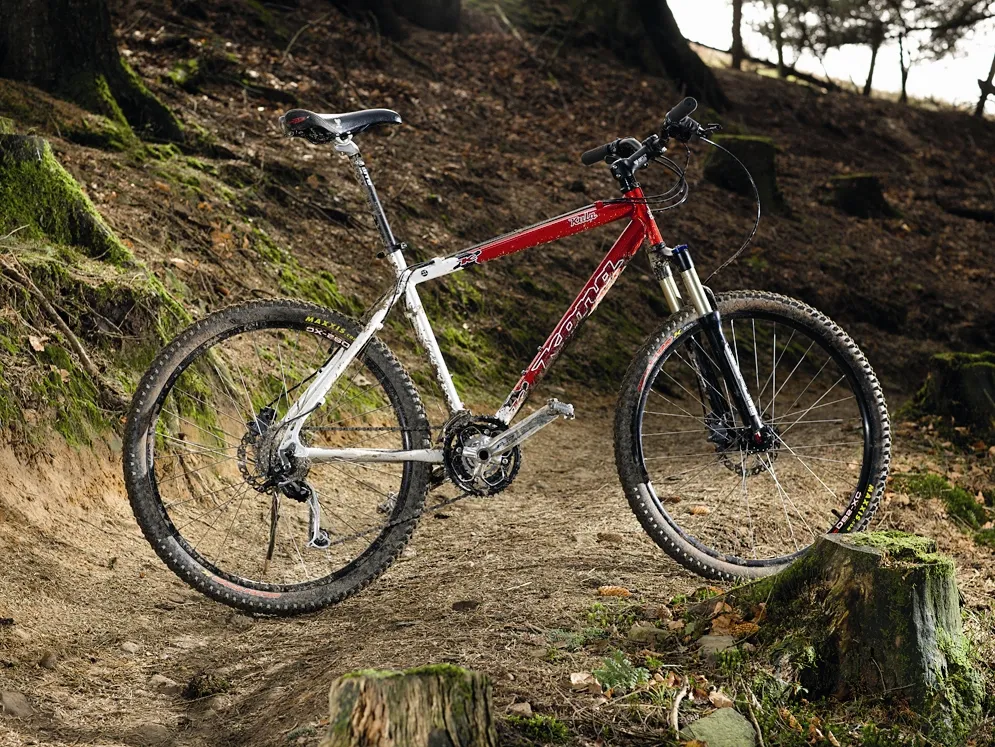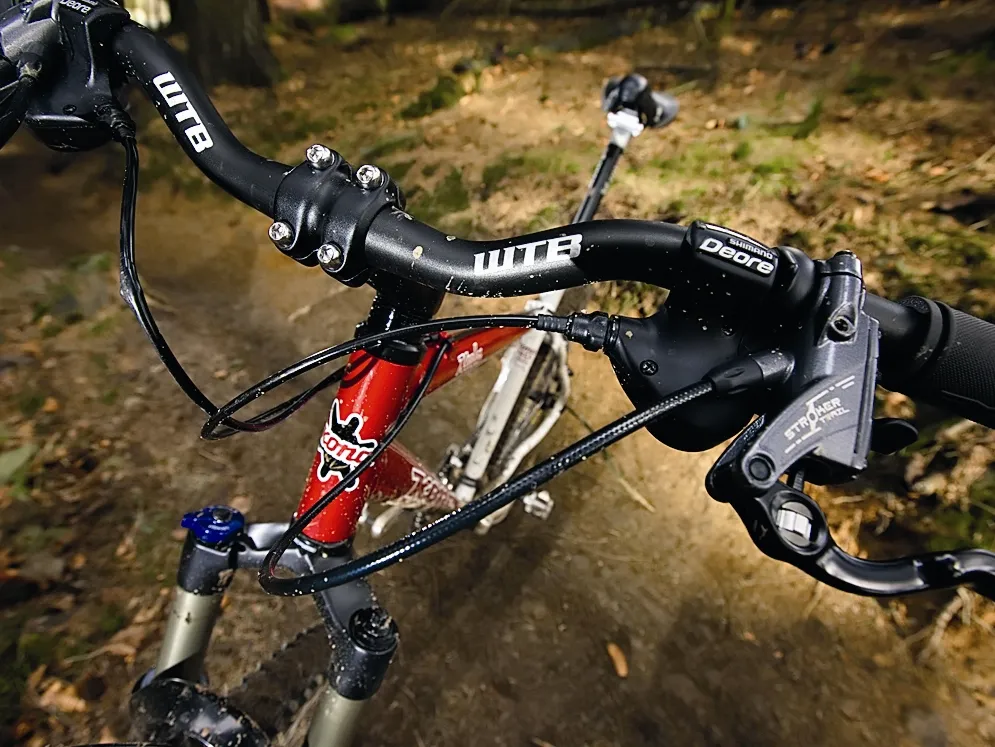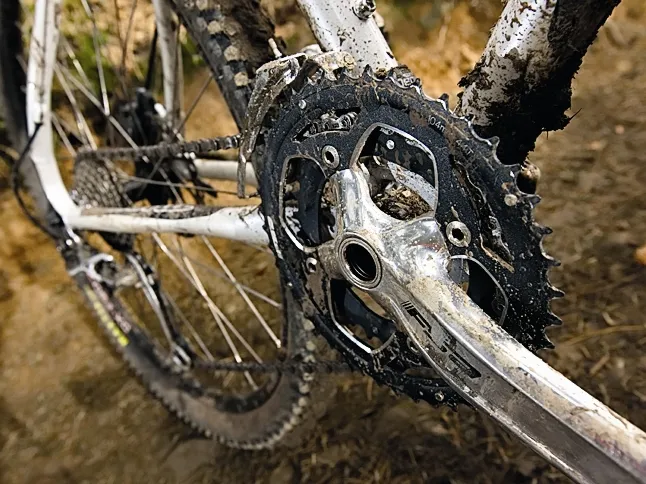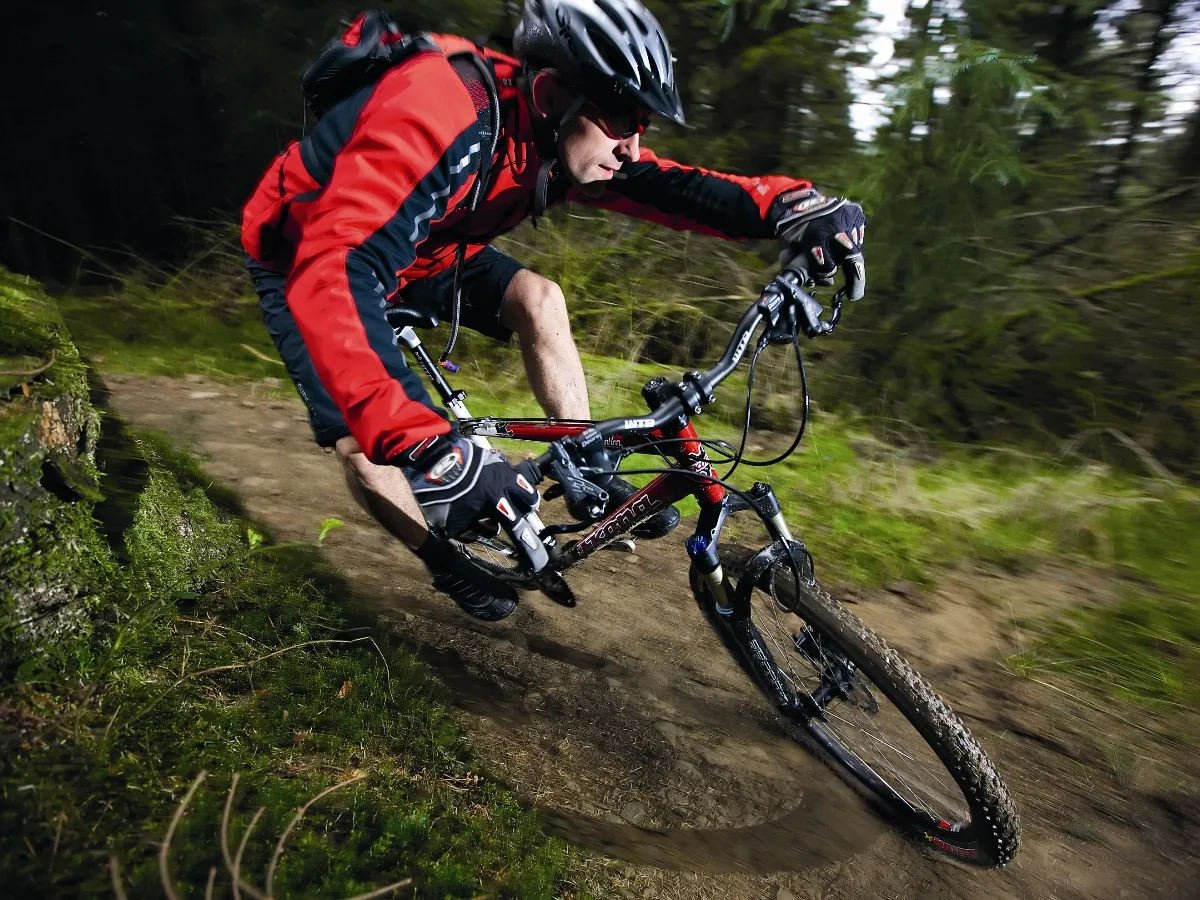Kona’s Kula was the first mainstream ‘singletrack specific hardtail’, blending the buttery suspension of Marzocchi’s Bomber fork with a bright orange Easton tubed lightweight frame to create an instant boundary breaker. Ten years on, the latest Kula is cheaper but still a whole load of fun.
Ride & handling: effortless traction surfing in the singletrack jive
The Kula’s frame construction is old-school, but the way Kona has laid out the geometry is radical – especially for a cross-country hardtail. Before you even get on, you’ll notice the short riser stem and high-rise bars to create a lofty, easily lifted position.
Once you’re on board, the slack steering angles will dominate your attention, and it takes a few corners to learn to swing the bike in earlier than usual and drift the back end out. Nevertheless, the steering always feels effortless and easily correctable. This encourages exactly the constant line tweaking and traction surfing that comes with pushing your limits on challenging terrain, and makes the Kula a joy to jive through the singletrack.
Despite only having 100mm of travel, the Kona loves it if you let it run on descents, with the front wheel fighting together with you to stay on line when cross-threaded roots, loose rocks and off-cambers are trying to trip you up.
The easy-lift front end and a layout that puts your body weight well back over the rear wheel make it a doddle to pop and float up steps, rocks or anything else that’s likely to knock momentum back. This meant that it often outclimbed lighter bikes on rougher, more technical climbs, despite draggier tyres. You can’t escape the fact it feels more cramped and sluggish on smooth sections, though, so it’s not an obvious race choice.
Where the Kona shone was longer-distance rides. It’s surprising because the tyre volume of the Maxxis rubber is relatively small, and the WTB bar and stem are about as basic as you can get without them being steel. There’s enough give in the frame and cockpit to take the sharp edge off most hits and general trail rattle, though, so you’ll be a lot more comfy on the Kona several hours into an adventure than on racier machines.
Frame: classic aluminium
The frame is Kona’s own butted aluminium tubing, and it has stayed with proven classic design rather than following the latest fashions.
That means round tubes with a big throat gusset reinforcing the frame at the front, and a seat tube extending above the sharply sloped top tube. A quick-release collar makes it easy to tweak the seat height or drop the saddle for technical descents, and there are two bottle cage mounts.
It’s all conventional at the rear end, with A-frame bridges between seat and chainstays. There are enough kinks and curves going on to leave ample mud room around the 2.1in tyres fitted. You might get jammed in claggy conditions with 2.2in/2.25in rubber, though.
Kona is generous with its sizing spread between 16in and 20in, so it’s easy to find your perfect size.
Equipment: specced to suit the singletrack
Kona has picked kit to suit the bike’s strengths. The RockShox Recon SL is barely heavier than the pricier Reba and is just as controlled and reliable. The only issue is that with such slack geometry, fitting even a slightly longer fork later simply isn’t an option.
The Maxxis Ignitor tyres are predictably grippy most of the time and don’t roll too badly in summer. Impressively powerful Hayes brakes give excellent control when you need it most, plus they’re reach-adjustable, which is rare at this price.
You’ll notice very little difference between the performance of the Kona’s Shimano Deore transmission bits and the Deore LX on some other bikes in this price range, although cable cleanliness is vital for keeping the soft-touch shift of both.
The bars and stem are basic, but they’re the right shape to suit the bike, and upgrading them will be a cheap way to lose weight. We’ve no complaints about the saddle and grips, and the fact the Kona comes supplied with proper SPD pedals is a bonus worth at least £30.
Summary: natural singletrack supremo
The Kula is a bit heavy and scores low on spec comparison, but where the it proves it’s cooler is where it really matters – the ride.
Radical slack angles rule out longer forks later, but it’s far more capable of charging into chaos and coming out fun side up than most 100mm bikes. It’s well equipped to make the most of its natural singletrack supremacy, too, making it a great ride straight from the shop.




